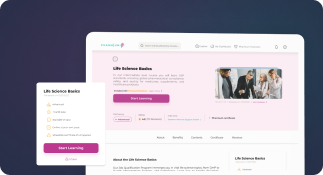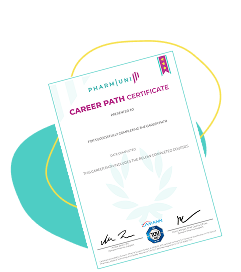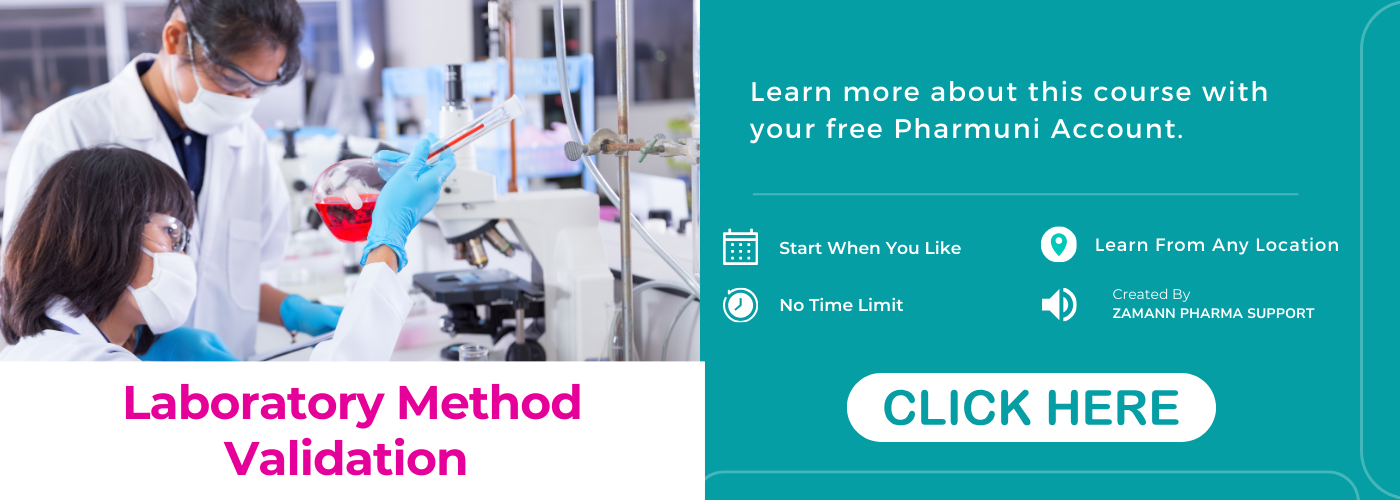Chromatography may sound complex, but it’s a simple and powerful tool. It separates mixtures into individual components for analysis. From pharmaceuticals to food safety, chromatography ensures accuracy, quality, and compliance. If you’ve ever wondered “what is chromatography?”, this guide explains everything. You’ll learn the basics, the science behind it, and why it matters. We’ll also cover practical uses in laboratories, industries, and real-world applications.
Whether you are a student, professional, or job seeker, understanding chromatography opens new doors in science and careers.
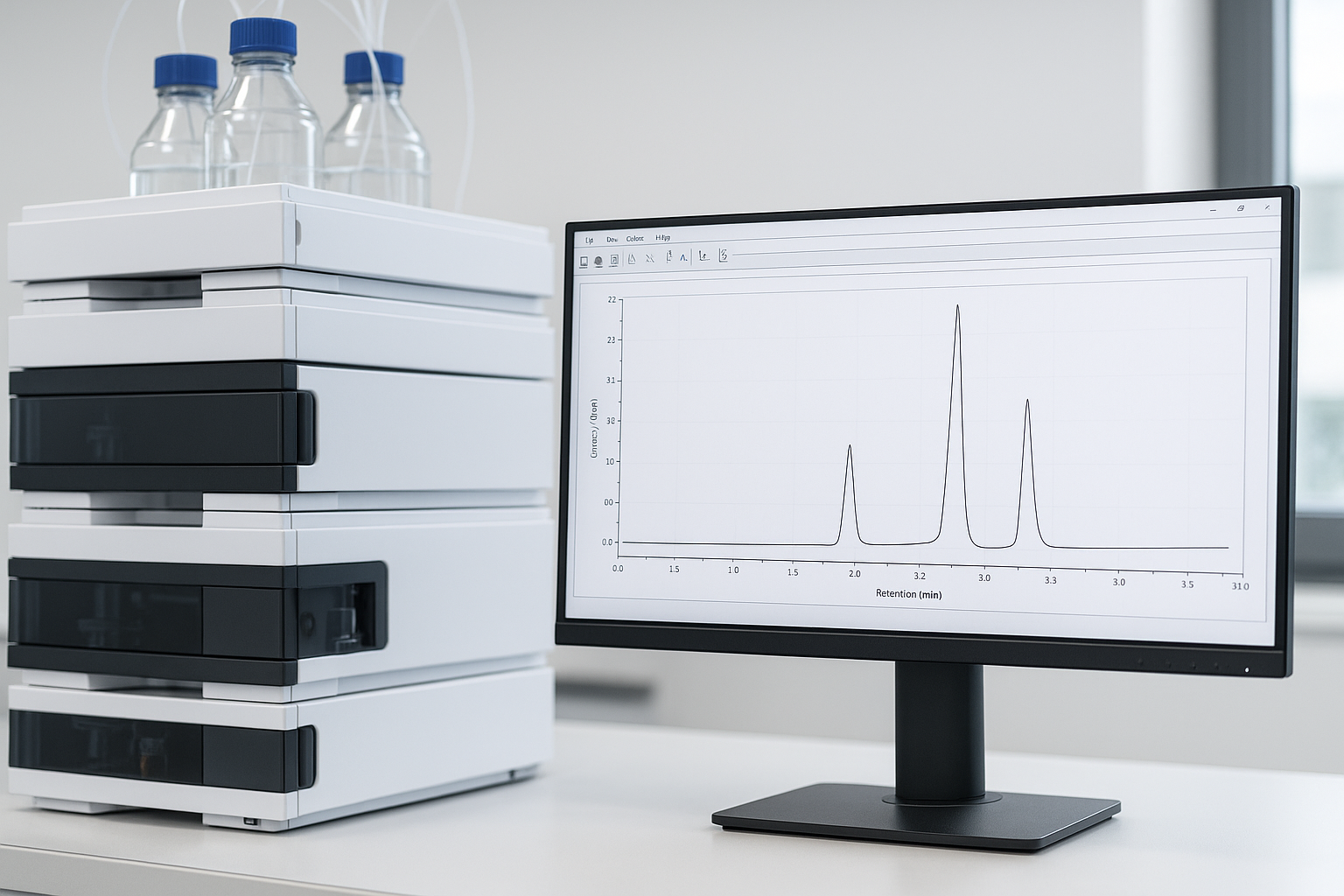
What Is the Definition of Chromatography?
Chromatography is a separation technique used in chemistry and biology. It helps isolate, identify, and measure compounds in mixtures.
The process works because different substances move at different speeds through a medium. This medium may be a liquid, gas, or solid.
This chromatography basics knowledge forms the foundation for advanced methods like HPLC or GC. Scientists rely on these methods for research and compliance.
Pro Tip: Remember that chromatography is not one single method. It’s a family of techniques, each designed for specific uses.
Sign up for Laboratory Method Validation - Foundational Course
Why Should You Learn Chromatography Basics?
Chromatography is valuable for:
Identifying compounds
Scientists use advanced separation techniques to pinpoint exact molecules within complex mixtures. This ensures the correct ingredients are present in every sample. By confirming identity and composition, these methods reduce formulation errors and improve the reliability of results.
Ensuring purity
Pharmaceutical companies use chromatography to guarantee patient safety by spotting contaminants. Food testing labs apply it to confirm products are free from harmful chemicals. Consumers benefit from safer, higher-quality products as a result.
Supporting research
Researchers use advanced separation techniques to study proteins, DNA, and small molecules. These methods reveal how substances behave under different experimental conditions. As a result, scientific discoveries become faster, more accurate, and applicable across a wide range of fields.
Meeting compliance needs
Advanced separation methods help products meet strict global quality requirements. Regulators like the FDA and EMA require validated analytical techniques in submissions. Companies that follow these standards avoid costly recalls and protect both compliance status and brand reputation.
Improving careers
Employers value professionals with hands-on chromatography experience. It opens doors to jobs in pharma, food safety, and biotech. Adding this skill to a resume makes candidates stand out in competitive industries.
Chromatography Process: How Does It Work?
The Chromatography Principle Explained
The process relies on two phases: the stationary phase and the mobile phase. The stationary phase stays fixed, while the mobile phase carries the mixture through. Each component interacts differently with these two phases, creating distinct patterns.
Some substances attach more strongly to the stationary phase, moving slowly. Others move quickly with the mobile phase, passing through faster. This difference in speed is what causes separation, known as the separation principle.
Think of it as a race where every compound has its own pace. By the finish line, the positions reveal how each component traveled. This makes it possible to separate, analyze, and measure them.
Retention time records how long it takes for a compound to exit the system. Each compound appears as a peak on a graph, indicating its presence and concentration. Analysts use these peaks as fingerprints to identify and quantify substances.
Although techniques differ—gas, liquid, or paper—the core principle is the same. Substances move at different speeds depending on their affinity for the stationary and mobile phases. This universal concept makes the method powerful across many industries and scientific disciplines.


Chromatography Methods You Should Know
Different chromatography methods meet different goals. Paper chromatography and thin layer chromatography (TLC) are great for teaching. They show basic separation visually.
Column chromatography improves on these, using a packed column for larger-scale separations. This method is widely used in chemistry labs.
Gas chromatography (GC) analyzes volatile substances. Forensic scientists, environmental labs, and food safety experts use GC often.
Liquid chromatography (LC) is common in pharmaceutical labs. HPLC (high performance liquid chromatography) is an advanced form that ensures precision and reproducibility.
Other specialized types include:
• Affinity chromatography – separates biomolecules like proteins.
• Ion exchange chromatography – uses charge differences for separation.
• Size exclusion chromatography – sorts molecules by size.
• Flash chromatography – speeds up traditional column methods.
Each method has strengths. Choosing the right one depends on sample type, accuracy needs, and cost.
What Are the Main Applications of Chromatography?
Pharmaceuticals
It ensures drug safety by confirming the right ingredients. Chromatography also verifies product purity and stability. Regulators depend on these results for market approval.
Food Testing
It identifies contaminants, additives, and allergens in food products. This protects consumers from harmful substances. Food companies use it to maintain trust and compliance.
Forensic Science
It detects drugs, toxins, and DNA fragments in samples. Investigators rely on it for accurate case evidence. It often provides the breakthrough needed in criminal investigations.
Environmental Analysis
It measures pollutants in air, soil, and water. Environmental labs use it to track contamination levels. Governments depend on it for setting safety regulations.
Uses in Daily Applications
You encounter this separation science more than you realize. It keeps medicines safe, food pure, and the environment clean. Behind the scenes, analysts use precise instruments to separate, detect, and measure tiny components.
Pharmaceutical companies test every batch with validated analytical methods. HPLC and GC confirm identity, strength, and purity before release. These checks protect patients and meet strict filing requirements.
Food manufacturers apply the same toolkit to uncover residues and additives. Labs screen for pesticides, allergens, and adulterants at trace levels. Reliable results safeguard brands and consumers alike.
Forensic experts depend on these techniques in criminal cases. They identify drugs, toxins, and accelerants with courtroom-ready evidence. Clear peaks and retention times support defensible conclusions.
Environmental labs monitor air, water, and soil using sensitive detectors. Early signals reveal pollutants before they spread widely. Regulators use this data to enforce limits and plan cleanup.
For job seekers, mastering these methods opens doors across industries. Skills align with GMP compliance, ISO 13485, and quality frameworks. Employers value professionals who can validate methods and interpret data.
Careers and Industry Growth
Demand for separation-science talent keeps rising. Companies need analysts, method-validation experts, and quality control specialists. Teams want people who can separate, detect, and quantify trace compounds with confidence.
Pharma and biotech invest heavily in advanced analytical platforms. HPLC and GC underpin identity, purity, and stability data for filings. Robust validation packages move products through regulatory reviews faster and safer. Food and beverage firms hire the same skill sets for safety compliance. Specialists screen for residues, allergens, and adulterants to protect consumers and brands.
Medical labs and research institutes seek practitioners who can design, validate, and troubleshoot methods. Hospitals need reliable results for patient care. Universities and CROs value hands-on instrument skills and data integrity expertise. Even green-energy startups apply these techniques to optimize fuels, polymers, and process streams.
Learning the fundamentals creates a strong career advantage. You’ll understand stationary vs. mobile phase behavior, selectivity, and resolution—even if you explain them without jargon. Adding HPLC/GC operation, system suitability, and data review to your resume expands global opportunities.
👉 Explore our Career Path courses to build laboratory and GMP expertise.
Types of Chromatography: Exploring Specific Techniques
Gas and Liquid Chromatography
Gas chromatography (GC) uses a gaseous mobile phase. It is best for volatile substances. Labs often analyze alcohol, pesticides, or environmental toxins this way. GC provides fast and reliable results.
Liquid chromatography (LC) uses a liquid mobile phase. It works for compounds that don’t evaporate easily. LC is flexible and applies to many industries.
HPLC is a powerful upgrade of LC. It offers high resolution, speed, and sensitivity. That’s why it dominates pharmaceutical testing. Regulatory agencies like FDA and EMA rely on HPLC data.
Both GC and LC require calibration and validation. Chromatography detector types, such as flame ionization or UV detectors, ensure accurate results.
Paper and Thin Layer Chromatography
Paper chromatography is one of the simplest chromatography experiments. It uses filter paper as the stationary phase. Students often use it to separate ink or food dye.
Thin layer chromatography (TLC) is similar but uses a coated plate instead of paper. It gives sharper results and is useful for monitoring reactions in labs.
Both methods are educational and affordable. They show the chromatography basics clearly.
Although less precise than GC or HPLC, they remain vital for quick checks. TLC, for example, confirms if a reaction has finished.
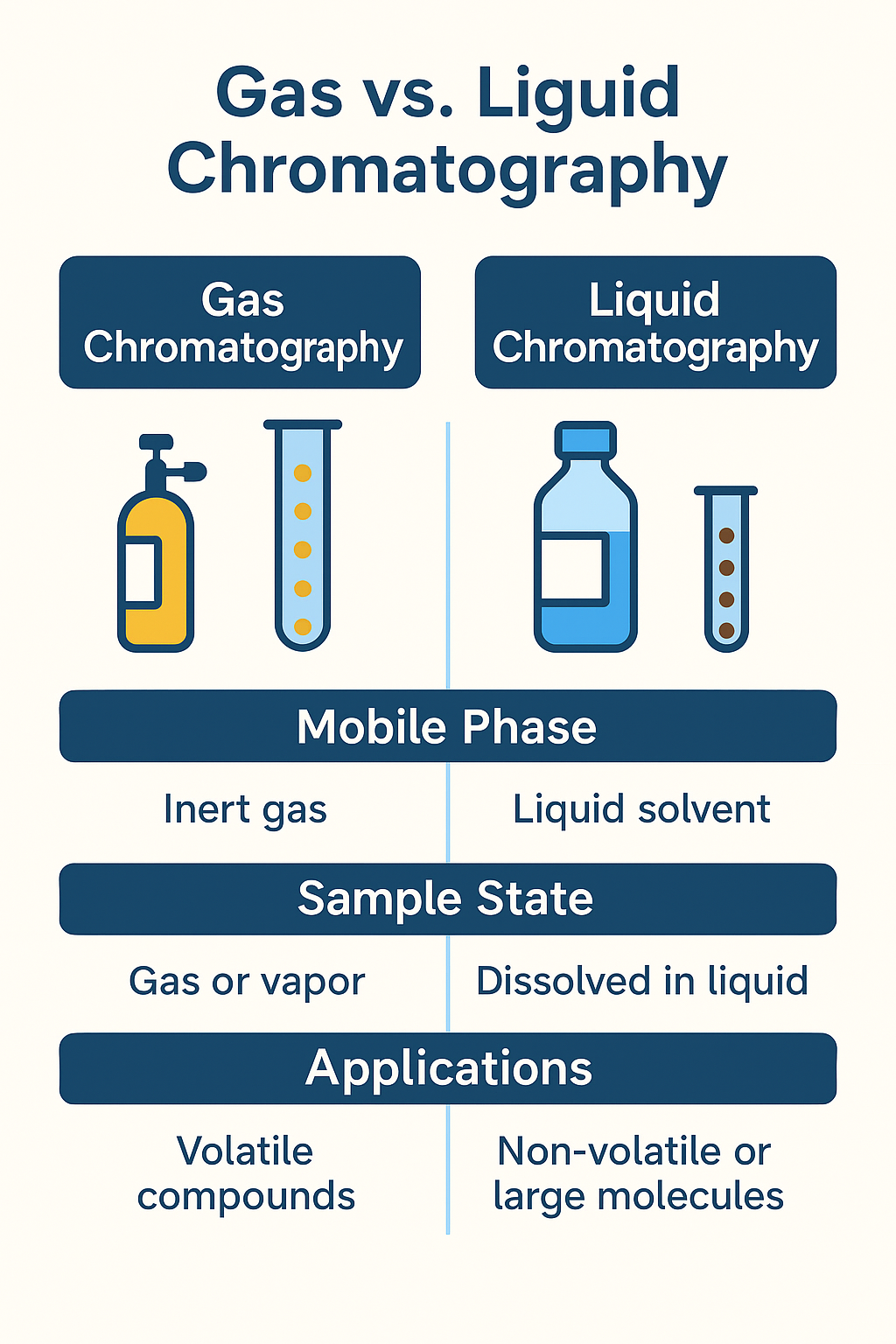
What Are the Advantages and Disadvantages of Chromatography?
Accuracy
Chromatography can identify even trace levels of compounds in a sample. This makes it vital for pharmaceuticals where safety depends on precision. Its high sensitivity ensures trustworthy results across industries.
Flexibility
Chromatography adapts to different sample types and scientific questions. It can analyze gases, liquids, or solids with equal reliability. This makes it a universal tool in research and production.
Speed
Techniques like thin layer chromatography provide rapid answers. Faster results mean quicker decisions in labs and industries. This efficiency saves both time and resources.
Cost
Paper chromatography and TLC are affordable for teaching and quick checks. However, advanced methods demand significant investment in equipment. Companies weigh cost against the accuracy and compliance benefits.
Frequently Asked Questions (FAQ)
Q1: What is chromatography in simple terms?
Chromatography is a method to separate mixtures into parts for analysis.
Q2: What are the main types of chromatography?
Paper, TLC, column, GC, LC, HPLC, affinity, ion exchange, and size exclusion.
Q3: Why is chromatography used in pharmaceuticals?
It ensures drug purity, safety, and compliance with regulatory requirements.
Q4: What is chromatography retention time?
It’s the time a compound takes to travel through the chromatography system.
Q5: How is chromatography different from electrophoresis?
Chromatography separates based on phase interactions, while electrophoresis uses electric fields.
Conclusion
Chromatography is more than a laboratory tool. It is a gateway to safer drugs, cleaner food, and reliable science. Understanding what is chromatography empowers you to see its role in health, industry, and daily life.
From chromatography definition to chromatography applications, you’ve now explored key principles, types, and uses. For professionals, it’s a career driver. For students, it’s a learning foundation.
👉 Learn more about laboratory methods with our Laboratory Method Validation course.
👉 Visit the Pharmuni homepage to explore career tools and resources.

Ershad Moradi
Ershad Moradi, a Content Marketing Specialist at Zamann Pharma Support, brings 6 years of experience in the pharmaceutical industry. Specializing in pharmaceutical and medical technologies, Ershad is currently focused on expanding his knowledge in marketing and improving communication in the field. Outside of work, Ershad enjoys reading and attending industry related networks to stay up-to-date on the latest advancements. With a passion for continuous learning and growth, Ershad is always looking for new opportunities to enhance his skills and contribute to pharmaceutical industry. Connect with Ershad on Facebook for more information.

Pharmaceutical Job Search – How To Find Top Biotech Careers
Kick-start your pharmaceutical job search with a clear plan. Learn where to find quality biopharma job listings, how to filter roles fast, and when to apply. Then upskill with micro-courses, add ISO-9001 certificates, and practice interviews.

Explore Top Remote Pharma Jobs and Start Working Online
Remote work is reshaping pharma hiring. Learn which fields thrive online, from medical writing to pharmacovigilance. See why flexibility, global access, and cost savings matter. Then, search Pharmuni Jobs and type “Remote” in the location filter to discover verified roles and apply fast.
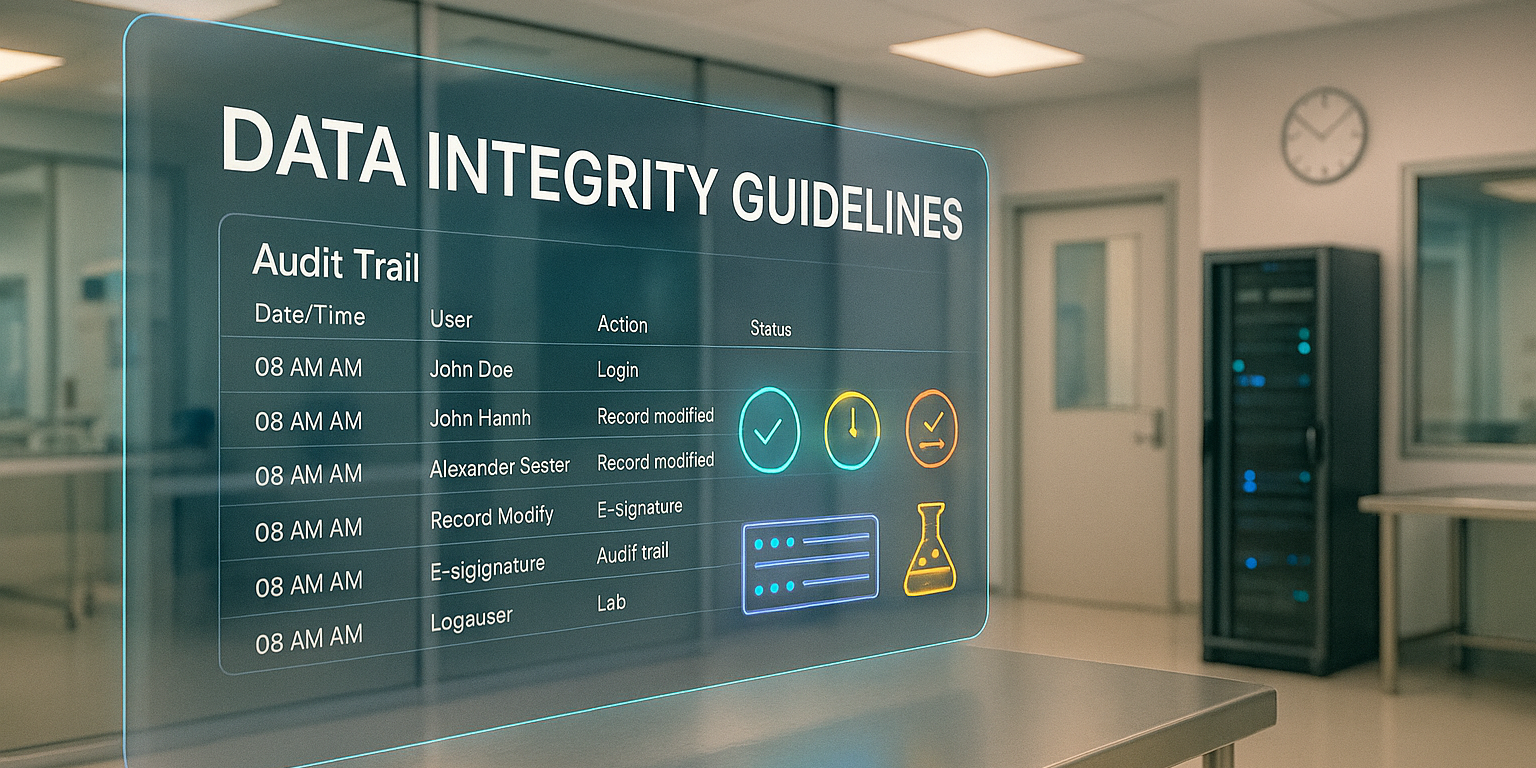
Data Integrity Guidelines: What You Must Do Now
Build trust with data integrity guidelines that translate ALCOA+ into daily controls. Secure systems, validate suppliers, enable audit trails, and prepare for Annex 11 updates. Boost compliance, speed releases, and protect patients. Start now—read the full guide and download the one-page checklist today.
